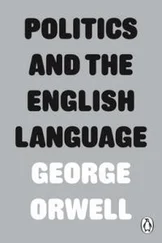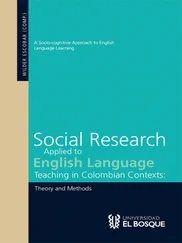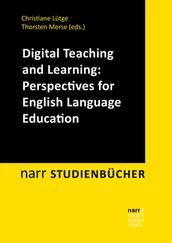you from?
In this unit you will learn how to:
• use the negative
• find out information about people
• talk about things that happen regularly or all the time
• use question words
• say that something belongs to someone
Dialogue 1
Gerry is talking to the wrong person.
GERRY:
Hello, Ian.
ADRIAN:
I’m not Ian, I’m Adrian.
GERRY:
Oh! . . . Sorry!
Gerry looks round the room.
. . . who’s Ian, then?
ADRIAN:
That’s Ian, over there.
GERRY:
Thanks!
Dialogue 2
Gerry goes to talk to the man Adrian has pointed out.
GERRY:
Hello – you’re Ian, aren’t you?
IAN:
Yes, I am. Isn’t your name Steve?
GERRY:
No, no – I’m Gerry.
21
IAN:
Oh, you’re Gerry, are you?
GERRY:
Yes, I am. I work with Steve.
IAN:
Do you? Where’s Steve, then?
GERRY:
I don’t know.
Language point 11 – negative short
forms
In Unit 1 we saw how the verb behas special SHORT FORMS in the present tense when making statements. Another important set of short forms with the verb beinvolves the NEGATIVE word not: Full form
Short form
I am not
I’m not
you are not
you’re not or you aren’t
he is not
he’s not or he isn’t
she is not
she’s not or she isn’t
it is not
it’s not or it isn’t
we are not
we’re not or we aren’t
they are not
they’re not or they aren’t
As you can see, when we add notto the present tense of be, we have a choice of how to do it – we’re allowed one SHORT FORM, and we can:
either
keep the short form of the verb and simply add not: he’s+ not= he’s not
or
use the full form of the verb and add not:
he is+ not= he isn’t
Both these ways are correct, and there is normally no difference in meaning or use. But there is no choice with I am not– the only short form possible here is I’m notand it is wrong to say ‘I amn’t’.
Another short form you need to know is don’t( do+ not) – we’ll see why later in this unit.
Notice that the short form n’tis written with the verb as one word :
we aren’t
not
‘we are n’t’
22
Exercise 1
Turn the statements into negatives, using both SHORT forms we have learnt. Be careful – in one of them you can only use one . The first sentence is done for you.
1
Pete’s in the office today.
Pete isn’t in the office today.
Pete’s not in the office today.
2
We’re ready to go.
________________________
________________________
3
I’m at home tomorrow.
________________________
________________________
4
They’re in the kitchen.
________________________
________________________
5
You’re very late.
________________________
________________________
6
Suzie’s back at work.
________________________
________________________
7
It’s very cold today.
________________________
________________________
8
She’s in the garden.
________________________
________________________
Dialogue 3
Jo wants to introduce Mark to Di.
JO:
Mark – this is Di, a friend of mine from work.
MARK:
Pleased to meet you, Di.
DI:
Hello, Mark. How do you know Jo?
MARK:
We go to the same fitness club . . . don’t we, Jo?
JO:
That’s right.
Dialogue 4
Andy is asking Bob about his daily routine.
ANDY:
When do you usually get up, Bob?1
BOB:
I get up at seven during the week, but I don’t get up so early at the weekend.
ANDY:
So . . . when do you leave for work?
BOB:
I leave the house at about eight.
23
ANDY:
And how do you get to work?
BOB:
I walk to work, because I live close to my office.
ANDY:
And when do you get back?
BOB:
About six.
ANDY:
What do you do in the evenings?
BOB:
Sometimes I go and work out2 in the gym. Or I watch TV. Or I go and see friends.
1 get up= ‘rise’, ‘get out of bed in the morning’
2 work out= ‘do exercises’
Language point 12 – present simple
There are two present tenses in English: the PRESENT SIMPLE and the PRESENT CONTINUOUS. Mark uses the PRESENT SIMPLE when he says We go to the same fitness club, because he is talking about an action that happens regularly.
The present simple is easy to form in English: with I, you, weand theywe use the BASE-FORM of the verb (the form of the verb without any endings, as listed in the dictionary); and with he, she, itand nouns (names of people and things) we add -sor -es. We only add -esif the verb ends in a vowel (e.g. go) or in -ch, -s, -sh,
-xor -z; otherwise we use -s. Here are some examples of the present simple:
live
work
run
go
finish
I live
I work
I run
I go
I finish
but
he lives
he works
he runs
he goes
he finishes
The verb havehas an irregular s-form has/hz/.
Pronunciation
The -sending is pronounced /s/ after VOICELESS sounds ( works–
/wks/), but /z/ after VOICED sounds ( lives/lvz/, runs/rnz/); the
-esending is pronounced /z/ after a CONSONANT: finishes/`fnʃz /, but /z/ after a VOWEL: goes/əυz/. The s-forms of two verbs, doesand says, have irregular pronunciations: /dz/ and /sεz/.
We form questions in the present simple by using the AUXILIARY
verb do, which is also used for the TAGS:
24
Do you live in Heathfield?
(TAG RESPONSE: ‘Yes, I do’/‘No, I don’t’)
Does James work in an office?
Читать дальше












